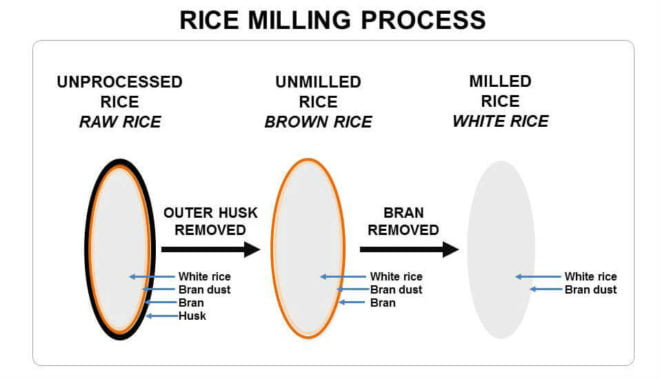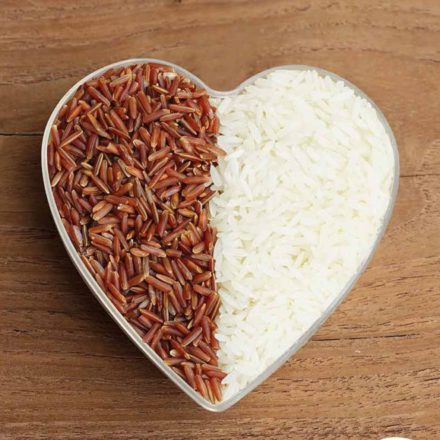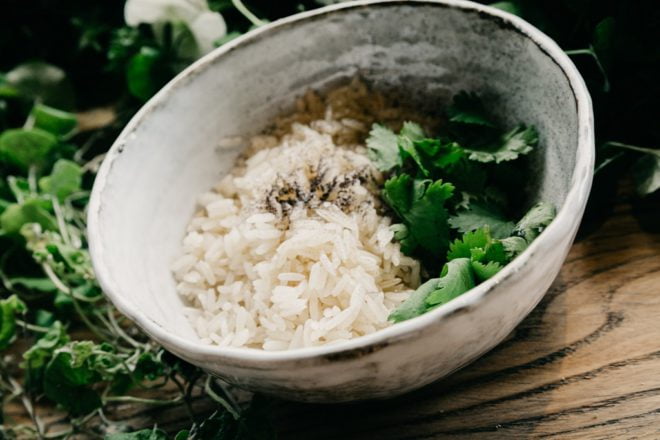Brown rice vs White rice: Rice (Oryza sativa) is a staple food for the majority of the world’s population, especially to those who live in India. There are many types of rice are there and comes in several colors, sizes, and shapes depending on how the producer processes them. The most commonly heard ones are brown rice and white rice. When it comes to health, most people prefer brown rice to white rice for several reasons.
The internet has multiple answers for the same question on what you should eat and what you shouldn’t. Some of these fads aren’t as true as you might believe. One such myth is that you should prefer brown rice to white rice to be healthy. Both have their benefits and drawbacks.
Read the article for Brown rice vs White rice.
Table of Contents
Brown rice vs White rice
All types of rice mostly contain carbs, protein in less amount, and nearly zero fat. Brown rice and white rice are almost similar than you may think. Before we get into Brown rice vs White rice (the important differences between brown rice and white rice), let us know what contains in rice grain.
Rice grain consists of 3 parts. They are bran, germ, and the endosperm.
The bran is the outer skin of the whole grain. It is rich in antioxidants, B vitamins, and fiber.
Rice germ has a high protein content, fatty acids, and fiber.
The endosperm contains mostly starchy carbohydrates, proteins, vitamins, and minerals in small amounts.

Brown rice is a whole grain and has 3 important parts which include bran, endosperm, and germ. White rice is a slightly processed form of the whole grain and has the only endosperm.
Brown rice vs White rice – nutrition
According to USDA, a cup (186g) of cooked white rice provides,
- Calories: 242 kcal
- Fats: 0.4g
- Sodium: 0mg
- Carbohydrates: 53.4g
- Fiber: 0.6g
- Sugars: 0g
- Protein: 4.4g
A cup of cooked brown rice provides,
- Calories: 248 kcal
- Fats: 1.96g
- Sodium: 2mg
- Carbohydrates: 51.7g
- Fiber: 3.23g
- Sugars: 0.16g
- Protein: 5.54g
The table below shows the comparision of nutrients of brown rice vs white rice.
[table id=1 /]
Here mg – milligrams, mcg – micrograms.
From the above table, you can see that brown rice contains more vitamins and minerals than white rice, except for iron and folate. The exact nutritional breakdown varies by the manufacturer.
Health benefits of eating brown rice
Being a whole grain, there are plenty of health benefits of eating brown rice.
- Brown rice (whole grain) helps in reducing and preventing cholesterol.
- Brown rice is high in magnesium and fiber, both of which help control blood sugar levels and lowers the risk of diabetes.
- Brown rice contains lignans, which reduce the amount of fat in the blood, lower blood pressure and decrease inflammation in the arteries, and lowers the risk of heart diseases.
- The type of carbohydrates present in brown rice is complex carbohydrates. This keeps you full for more time.
- Brown rice contains many powerful antioxidants which help prevent chronic diseases.
- Brown rice can also help you to lose weight and Body Mass Index (BMI).

Drawbacks of brown rice
- Brown rice takes more time to digest.
- High arsenic content is present bran of the brown rice. Overexposure to arsenic can be harmful to your stomach-related organs.
- Brown rice has an anti-nutrient called phytic acid in its bran. It consolidates itself with the nutrients and minerals in your body and retains every one of these supplements from your system
Health benefits of eating white rice
Nonetheless, white rice also has benefits that are less taut.
- When it comes to digestion, white rice is very nice to your stomach. It is easier to digest white rice than brown rice.
- White rice is a carb-rich source. Many athletes prefer white rice as it provides quicker energy.
- White rice, due to the absence of bran, contains less arsenic content than brown rice.
- Since the bran is removed, it doesn’t contain phytic acid.
- White rice is substantially more effectively broken down by your body into glucose. Since the glycemic index of white rice is more compared to that of brown rice.

Drawbacks of white rice
- White rice has fewer nutrients compared to brown rice.
- Consuming simple carbs in a long run disturbs the blood sugar levels. As a result, it leads to diabetes.
- White rice has less fiber content compared to brown rice.
- If consumed in excess amount, results in weight gain.
Which type of rice is better for you?
Both brown rice and white rice are whole foods that have several health benefits and can be included in a healthy diet. Having the same kind of rice has many drawbacks in the long run. For optimal health, it is suggested to consume few servings of brown rice and white rice in a week. Again, this can not be correct in all cases. Depending on your health condition, one type of rice may be preferable to another. It is recommended to consult a doctor before changing your diet patterns.